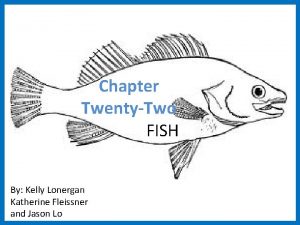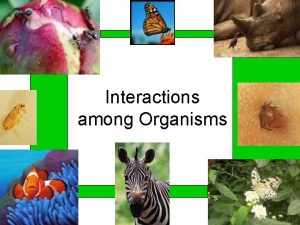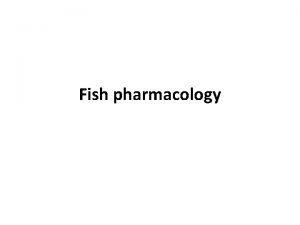Fish disease what is a disease A disease













- Slides: 13

Fish disease

what is a disease? A disease is a particular abnormal condition that negatively affects the structure or function of part or all of an organism, and that is not due to any external injury. Diseases are often construed as medical conditions that are associated with specific symptoms and signs. A disease may be caused by external factors such as pathogens or by internal dysfunctions. For example, internal dysfunctions of the immune system can produce a variety of different diseases.

There are four main types of disease: Ø infectious diseases Ø deficiency diseases Ø hereditary diseases (including both genetic diseases and non-genetic hereditary diseases) Ø physiological diseases

Types of fish diseases What are the types of fish diseases? � 1 -Non-infectious diseases: �Can’t �Not � be spread from one fish another. caused by germs or pathogens. 2 - Infectious disease �Can be passed from one fish to another. �Caused by germs or pathogens.


Causes of fish diseases There are three major causes of fish diseases: 1 - Presence of environmental pathogens 2 - Low resistance of the fish stock 3 - Unsatisfactory water environment



Sick fish Healthy fish Activity Swimming slowly; sluggish response Swimming actively; sharp and responsive Body Color Dull, dark or discolored Bright and glossy Body Surface White layered patches Intact Body Shape Thin Normal size Feed Intake Poor appetite Good appetite Organs Different fish diseases cause damage to different organs Internal organs are healthy and normal

Pathogens (e. g. bacteria, viruses, fungi and parasites) exist in all natural water bodies, yet healthy fish have adequate resistance against them. They can also adapt to reasonable environmental changes and in turn avoid diseases due to pathogenic infection. Healthy fish All factors in balance Environment Pathogens

When the pathogen level of a water body rises sharply due to external factors, and the natural resistance of the fish stock cannot cope with the increased pathogens, the fish will become vulnerable to pathogenic infection and diseases. Sick fish Fish unable to cope with increased pathogens Environment Increased Pathogens ***

In addition, external factors may also cause, resulting in poor health and low resistance of fish stock. The risks of pathogenic infection and fish diseases or deaths are heightened. Sick fish Lowering of fish resistance Environment deteriorating drastically** Pathogens

- To prevent and control fish diseases, we should: maintain a good culture environment and prevent the detorsion of water environment; and use hygienic and nutritious fish feed to boost resistance of the fish stock and to minimize the chance of introducing pathogens to the water body.
 One fish two fish red fish blue fish ride
One fish two fish red fish blue fish ride One fish two fish red fish lungfish
One fish two fish red fish lungfish One fish two fish blowfish blue fish script
One fish two fish blowfish blue fish script A big fish swims up and swallows a small fish at rest
A big fish swims up and swallows a small fish at rest Sizes and market forms of dressed fish
Sizes and market forms of dressed fish Is croaker a cartilaginous fish
Is croaker a cartilaginous fish Bony vs cartilaginous fish
Bony vs cartilaginous fish Communicable disease and non communicable disease
Communicable disease and non communicable disease Fish kidney
Fish kidney Market forms of fish drawn
Market forms of fish drawn Magic school bus fish sperm
Magic school bus fish sperm Ernie gave bert dead fish
Ernie gave bert dead fish Lamprey and fish relationship
Lamprey and fish relationship Fish pharmacology
Fish pharmacology
























